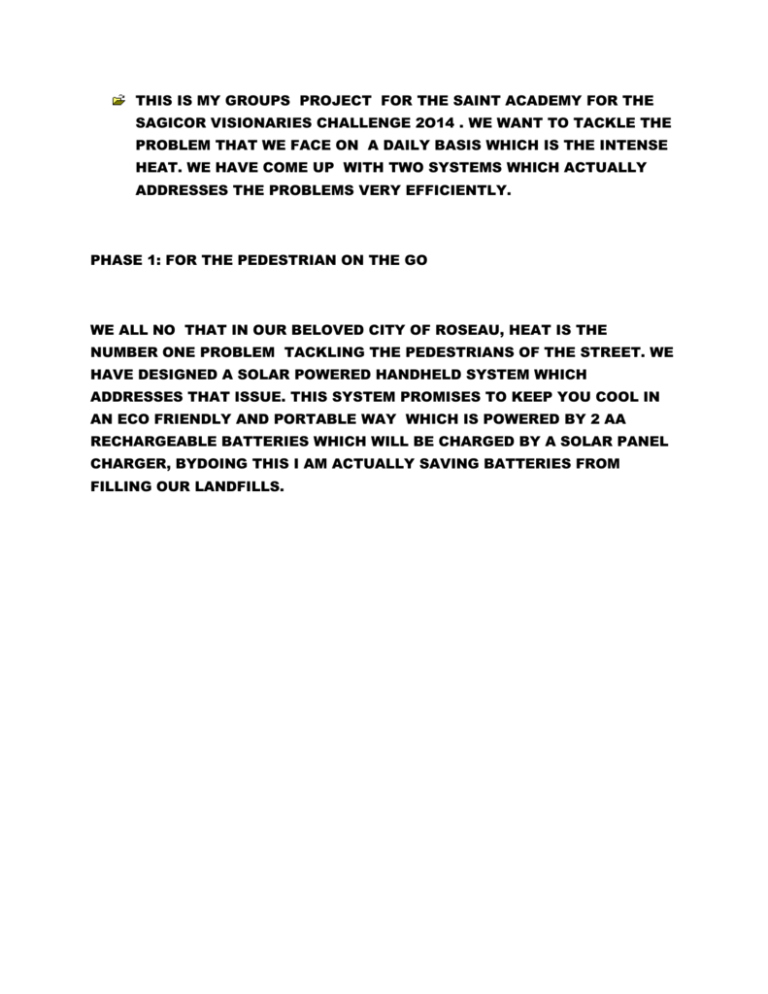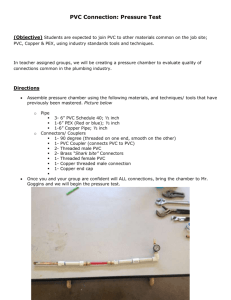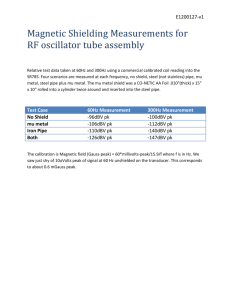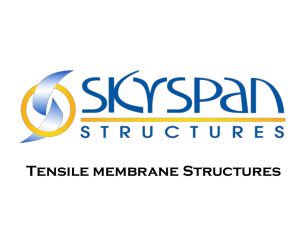Step 1: How It Works - Sagicor Visionaries Challenge
advertisement

THIS IS MY GROUPS PROJECT FOR THE SAINT ACADEMY FOR THE SAGICOR VISIONARIES CHALLENGE 2O14 . WE WANT TO TACKLE THE PROBLEM THAT WE FACE ON A DAILY BASIS WHICH IS THE INTENSE HEAT. WE HAVE COME UP WITH TWO SYSTEMS WHICH ACTUALLY ADDRESSES THE PROBLEMS VERY EFFICIENTLY. PHASE 1: FOR THE PEDESTRIAN ON THE GO WE ALL NO THAT IN OUR BELOVED CITY OF ROSEAU, HEAT IS THE NUMBER ONE PROBLEM TACKLING THE PEDESTRIANS OF THE STREET. WE HAVE DESIGNED A SOLAR POWERED HANDHELD SYSTEM WHICH ADDRESSES THAT ISSUE. THIS SYSTEM PROMISES TO KEEP YOU COOL IN AN ECO FRIENDLY AND PORTABLE WAY WHICH IS POWERED BY 2 AA RECHARGEABLE BATTERIES WHICH WILL BE CHARGED BY A SOLAR PANEL CHARGER, BYDOING THIS I AM ACTUALLY SAVING BATTERIES FROM FILLING OUR LANDFILLS. Step 1: How It Works: The concept is simple: a bilge pump transports cold water from an ice cooler, and is then pumped through a wound coil of copper tubing, which surrounds the circumference of an electric fan. Thus, when the bilge pump circulates the flow of ice water around the metal copper tubing coils, the cold air is sucked around them and produces and Eco Friendly blast of cold air. Step 2: ICE COINTAINER I HAVE DECIDED TO USE AN ICE COINTAINER AS IT IS VERY PORTABLE AND LOOKS TO BE A VERY VERSATILE SOLUTION TO HEAT IN A CONVIENENT WAY KEEPING ICE COLD FOR UP TO 1.5 HOURS. The ice container is what houses all of the ice, water and water pump system so that the fluid is always in motion. I also dremelled three small holes at the top lid, which is how the two stiff plastic tubes will be connected to the cooling coils, as well as the battery wire, fit through the lid to get to the ice water. IN THE HOLES IN THE CAP THAT WILL ACT AS THE TUBING IN FROM THE LEFT AND TUBING OUT FROM THE RIGHT. NOTE*- A BILGE PUMP WOULD BE LITTLE TO BIG, BUT A PUMP FROM A ZEN FOUNTAIN WOULD BE BETTER. THE BATTERY WOULD BE RE –SOLDERED BACK TO 7 INCH LENGTH OF WIRE CONNECTED TO A WATER PUMP, AFTER THE WIRE WILL BE FED TO A THROUGH THE THERMOS CAP. THE ENTIRE UNIT WILL BE POWERED BY 2 AA BATTERIES RECHARGEABLE Step 4: Aperture 3: "Conditioner Coil + Fan" The final aperture in this product is the copper tubing cooling coils. Next, four tie-wraps to connect THE wound coils to my fan, and then took both ends of the coils and inserted them into the non flexible plastic tubing. This connects the final piece of the PORTBALE SYSTEM, so now the ice water can travel from the pump, through the coils and back into the thermos again, in a rapid circular flow. Materials and Parts Index Desktop Fountain Thin Copper Tubing Stiff Plastic Tubing Soldering Shrink Tubing Handheld Plastic Fan BEAT THE HEAT= PHASE 1: PORTABLE COOLING SYS TEM PHASE 2= CLASS COOLING SYSTEM PHASE 2 IS TO ADDRESS THE PROBLEM OF HEAT IN MY CLASS IN AN ECO FRIENDLY AND SUBSTAINABLE WAY WHICH ONLY USES HEAT FROM THE SUN, EVAPORATION, CONVECTION, AND ADHESION/COHESION WHICH WILL SUSTAINABLY AND EFFICTIVELY ADDRESS THE PROBLEM OF HEAT IN MY CLASS WITHOUT USING ANY ELECTRICITY WHAT SO EVER, MY SYSTEM IS BY FAR THE BEST ECO FRIENDLY SOLUTION TO COOL MY CLASS STEP 1: THEORY OF OPERATION 1. Convection: But what does that mean!? Hot air rises. As the hotter air rises, it can draw cooler air up with it. Convection cycles can occur when hot air rises, and draws cooler air from lower elevation. When the hot air rises and loses energy it begins to fall. 2. Evaporation: We are using water in this project as our cooling agent. Evaporation is when a substance changes from liquid to gas 3. Cohesion and Adhesion: Cohesion and Adhesion are two properties of water, and are closely related. Cohesion means that water tends to stick to itself, or try to stick together. You can see this by placing small drops of water onto wax paper. You'll notice that the drops tend to ball up. This is because of the strong polar bonds in the water that attract individual molecules to one another. Adhesion means that water sticks to other things. These three principles make the Unit what it is. The sun will shine on the unit and heat the air at the bottom of the shaft. The air will rise, and also draw in more air from the bottom. As the air rises, it will cause water in a small chamber to evaporate. When the water evaporates, it will take energy away from the heated air in order to change from a liquid to a gas. This will cause the surrounding air to get cooler. The water is brought into contact with the moving air by a piece of fabric. The fabric will pull up water from the chamber to increase the surface area of the water with respect to the moving air. As the water evaporates and the fabric gets dry, more water will be drawn up the fabric due to the awesomeness of cohesion and adhesion. Materials needed 1. 2. 3. 4. 5. 6. MDF Sheet. | 1/4" thick. 2'x4'. Glass sheet. | 11.5"x20.5". Sheet Metal. | Recovered from old microwaves. 1" PVC Pipe. | A small section. 1/2" PVC Pipe | A small section. I 1" PVC-1/2" Elbow. | The 1" side was a slip coupling, and the 1/2" side was threaded. 7. 1/2" PVC Male-thread Coupler. 8. 1" PVC End Cap. 9. PVC Primer and Cement. | 10. Wood Glue. | $3-4. 11. Caulk. | 12. Matte Black Paint | 13. Mesh. | 14. Small wood screws. | 15. Fabric. | Tools: 1. 2. 3. 4. 5. Dremel Rotary Tool. Oscillating Cutting Tool. Jigsaw. Drill. Various hand tools: knives, scissors, screwdrivers, etc. 6. Step 2: Build Pt. 1 - Cutting Wood The wood will form the baseboard which will provide support to the entire unit, the baseboard will have holes cut into to it for the convection shaft and for the wooden-glass insulation box and at the top of the convection shaft a 2-3 gallon water/trough tank for evaporation. Step 3: Build Pt. 2 – Gluing This section focuses basically on the wooden -glass insulation box which will prevent the loss of heat which is so vital to my system. In the middle/center of the box a glass panel which could be obtained from an old window will be placed and glued with acrylic silicone to insure a study and firm seal between the box and the glass. Step 4:build part3 metalwork For this step since metal is not so easy to obtain I hope to obtain the metal from the frame form an old microwave for the main convection shaft, because metal conducts heat better than pvc or wood. A small amount of acrylic silicone will have to be placed to ensure a good seal with the baseboard, but the two ends will not sticked together, so that it could be easily taken apart and repaired if necessary. Step 5: Build Pt. 4 – PVC I decided to build the water holder/trough out of PVC pipe, since it's easy to work with, easily available, and inexpensive. A small section of 1/2" diameter PVC will go through a hole cut in the top of our metal container to a male adapter coupling and into a 90-degree elbow, which has a 1" slip-coupling on the other side. The section of 1" PVC will have a slit cut in the top for the fabric to go into, and be capped off with an end cap. I will PVC primer and cement for the smooth coupling pieces and end cap, but did not glue the threaded piece in case I need to take it apart for repairs. I used a 1/2" end cap, not glued in place, to top off the 1/2" pipe. At the top you can see that two gallon water/trough tank where a pvc pipe will hang out from the top where water can easily be inserted for evaporation. Show All 8 Items There are a few unrelated things that still need to be done before this is operational. 1. A small piece of fabric must be cut and fit into the cut made in the 1" PVC pipe. Mine was from an old t-shirt. 2. A hole must be cut in the base board for the air to be able to move into the class. and with the same width as the fabric piece. 3. A hole was cut into the bottom of the outer box, and a piece of mesh glued in place to allow air to be drawn in from the bottom. 4. Everything must be assembled. The fabric must be put into position, from the pipe to the edge of the metal box. Holes have to be drilled, and small wood screws will be used to hold the metal box to the base board. The bottom of the metal box, as well as the wooden outer box were box painted black because the colour black traps heat better as opposed to brighter colours In ending this is my plan to effectively change the way my class operates, and also for the pedestrian on the go who needs an ecofriendly way to cool his/her self. * To use the unit. I simply place it outside my class and add water to the spout above the metal housing, and put the window-box in place over it and allow the magic to begin I hope this provided some insight on my projects, upon winning this challenge I hope to access the materials to make actual working models, I also hope to sensitise the public on heat related sicknesses and its dangers.







